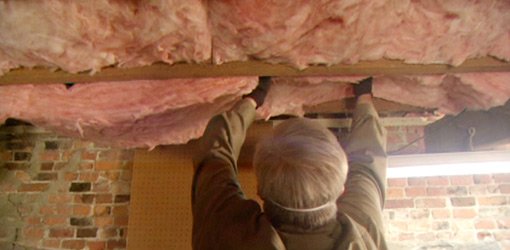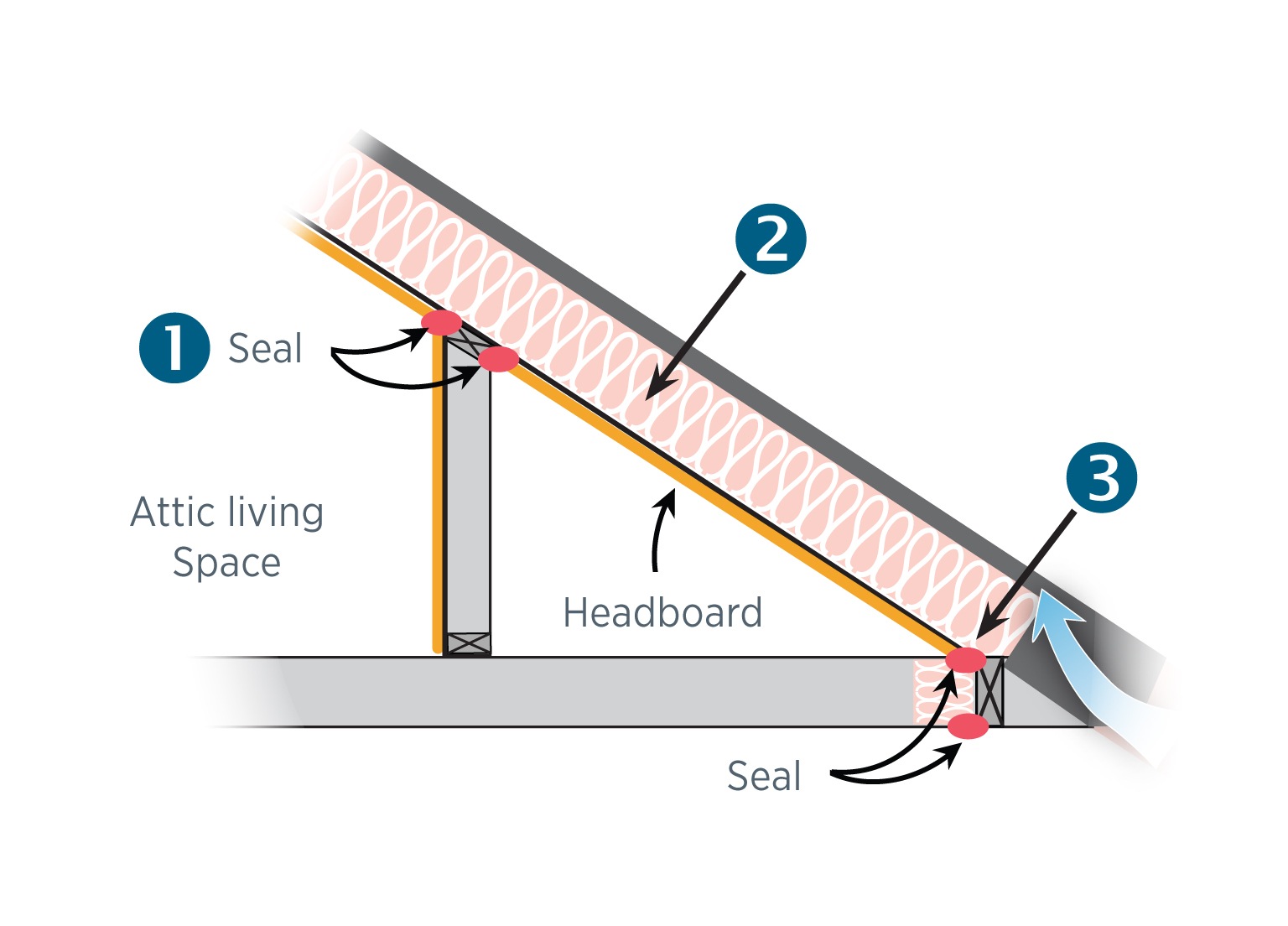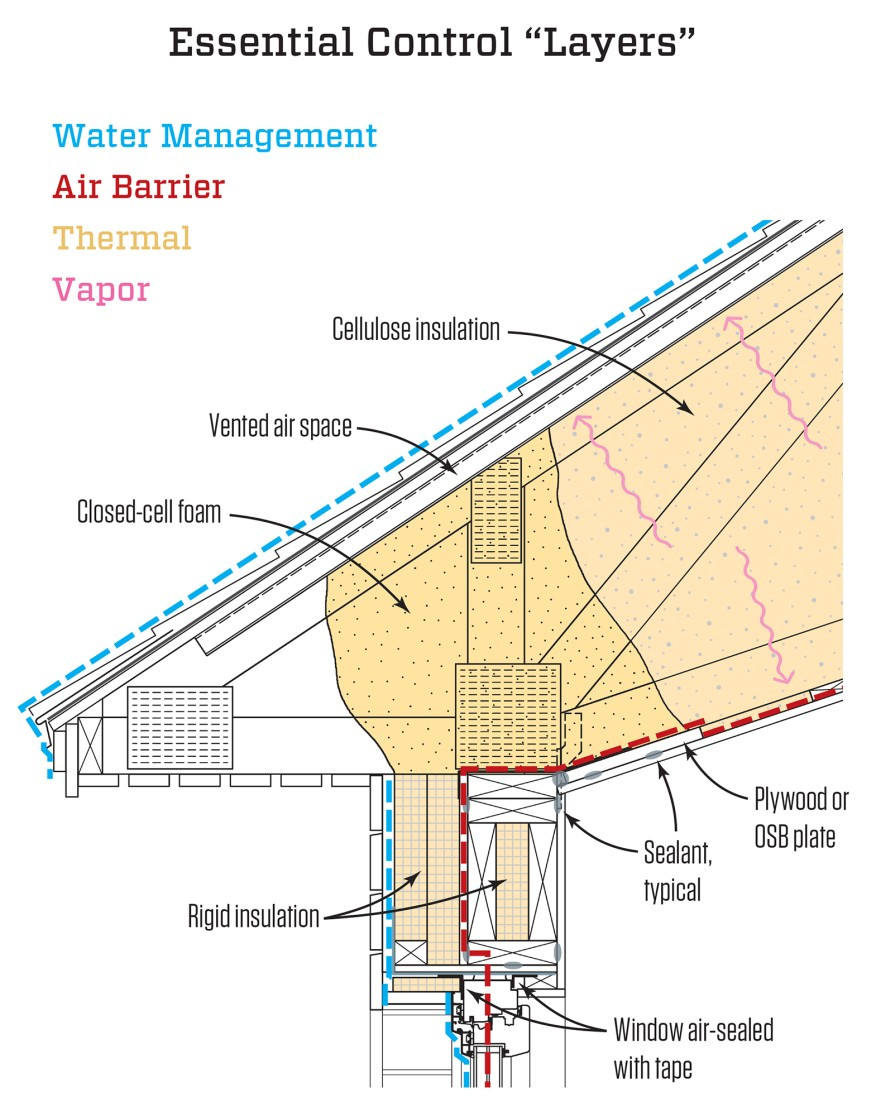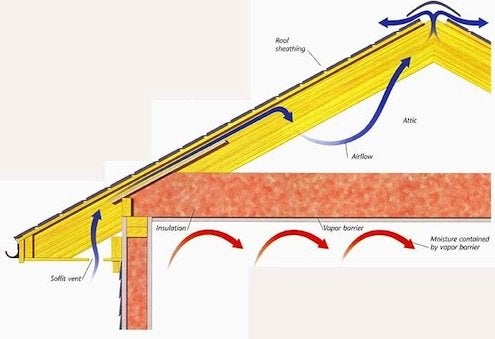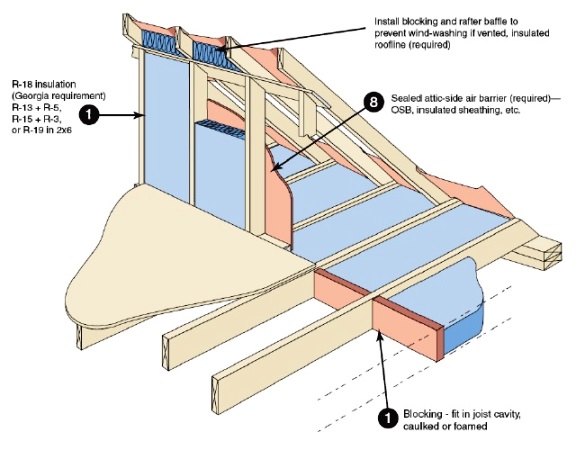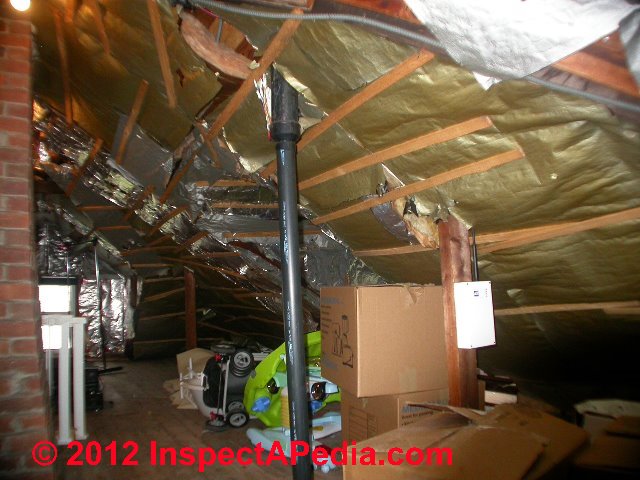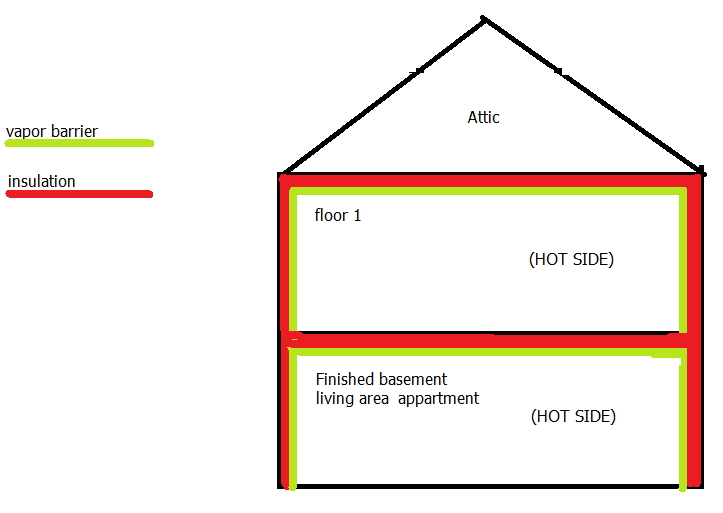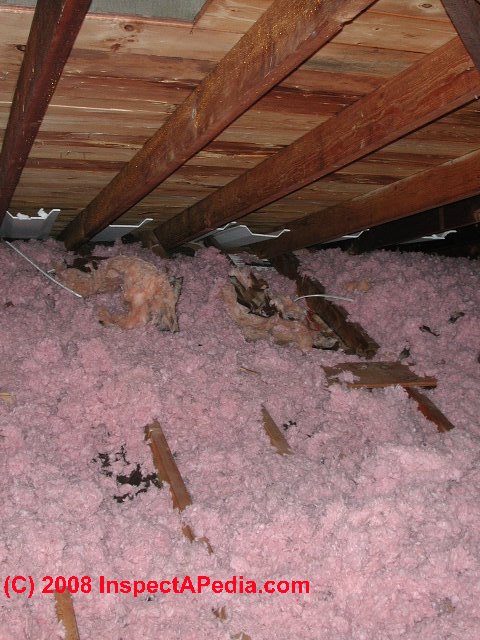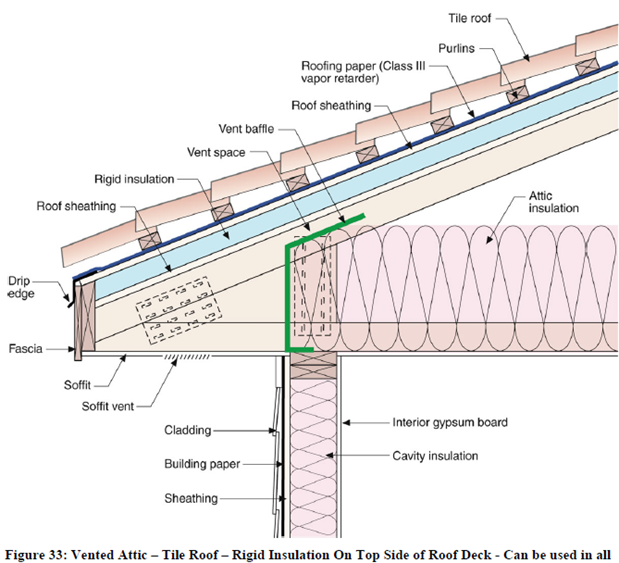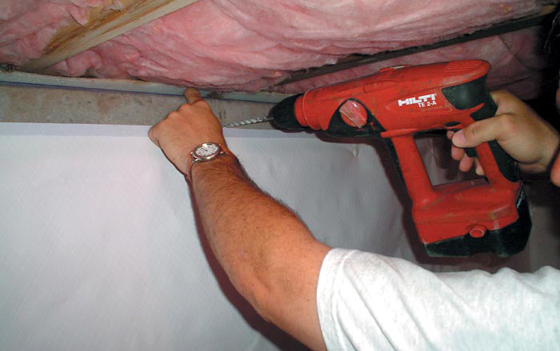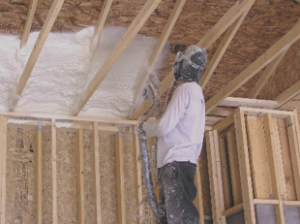The best approach for a vented attic in a cold climate is installing a layer of drywall with a good coat of latex paint the paint creates a semi permeable vapor barrier.
Attic insulation vapor barrier direction.
In cold climates the opposite is true.
Vapor barriers in attics should only be installed on one side of the insulation.
Not be trapped inside.
Also on the graph is the permeance of polyethylene.
The purpose of insulation facing the facing on kraft faced insulation is made of kraft paper with an asphalt coating that makes the paper impermeable to water vapor.
If the insulation is installed with the paper vapor barrier facing away from the heated part of the home moisture from humid inside air can condense and become trapped in the insulation during cold winter months.
This acts as a barrier to keep heated moist air from rising up into the attic during cold weather.
A vapor retarder is a material used to prevent water vapor from diffusing into the wall ceiling or floor during the cold winter.
Adding a second vapor barrier could cause condensation to become trapped in the insulation between the two vapor barriers.
If you put it on the right side where the humidity is it s not much of a vapor retarder.
Not so asphalt saturated kraft paper.
Not every wall does.
The paper creates a vapor barrier that helps keep the water vapor in the warm moist heated indoor air from migrating outward into the wall or other structure.
The placement of the vapor barrier depends largely on the climate where your house is.
Attic insulation should always be installed with the paper backing facing toward the living space the ceiling in this case.
The wetter it gets the better it dries.
In warm climates the barrier should point to the outside of the house blocking the vapor from the humid outside air that may seep into the walls or ceilings.
Never compress or fluff your insulation.
The insulation fiberglass or cellulose is then placed on top of the drywall with no vapor barrier above or below.


